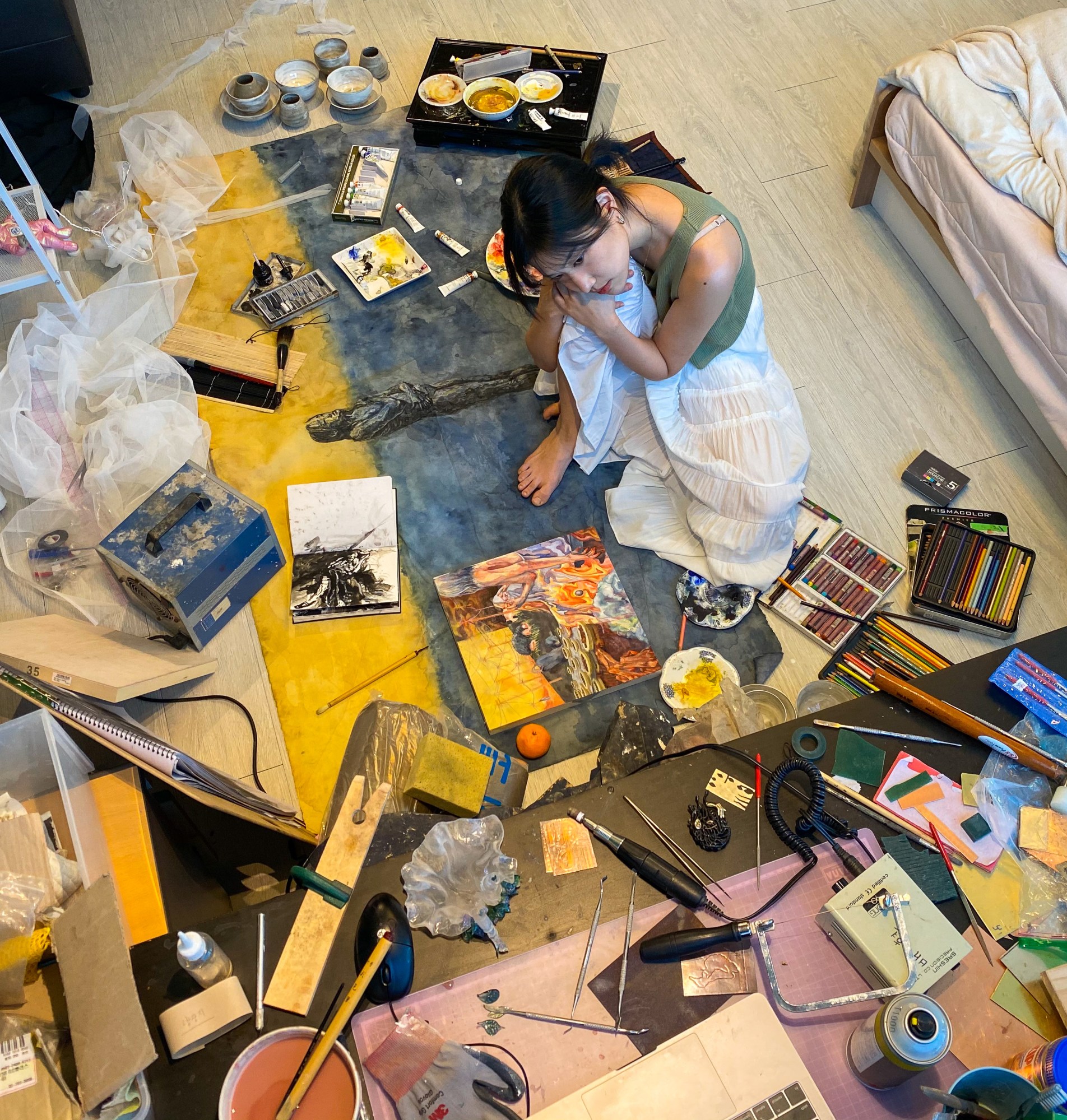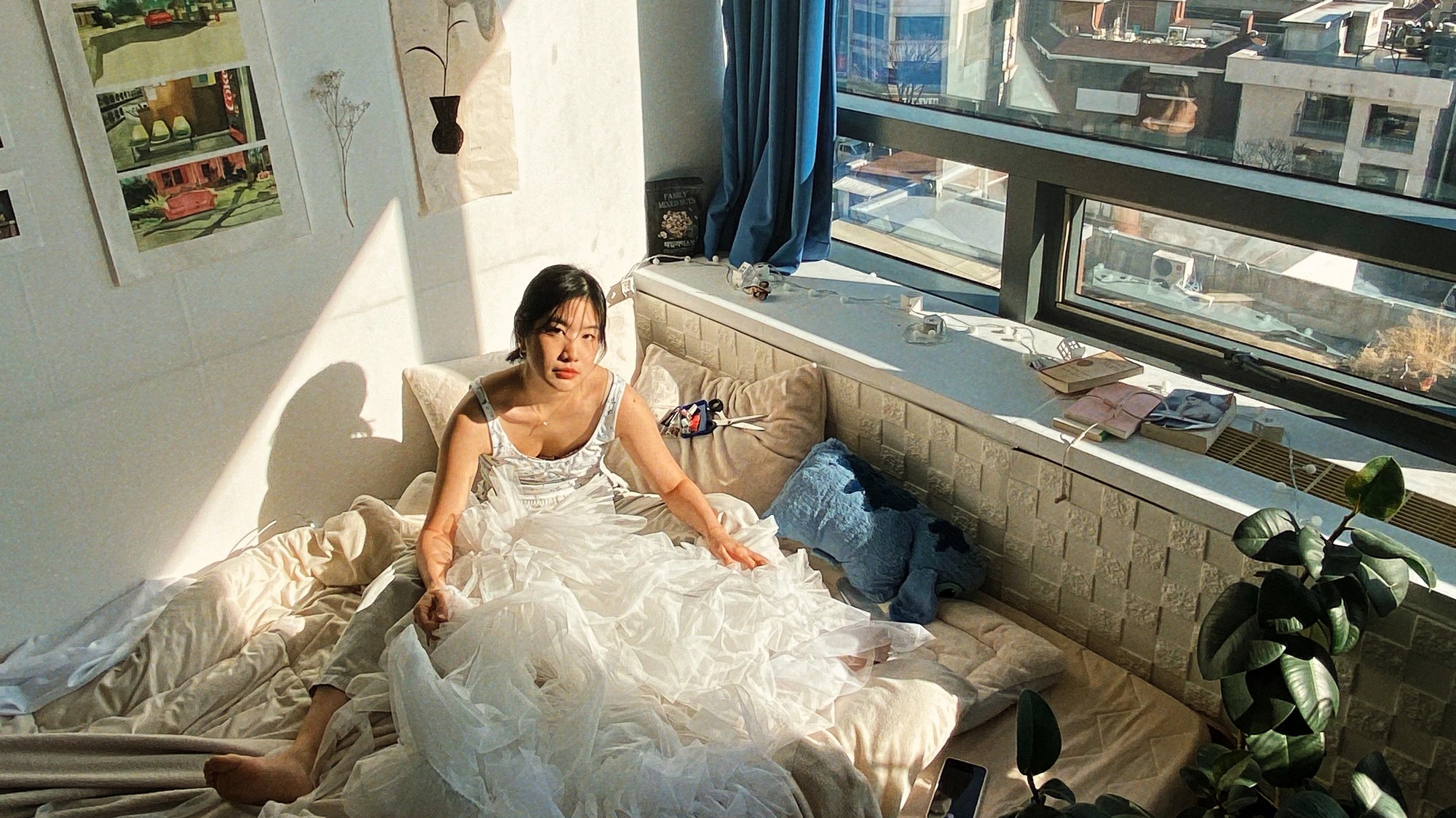With the number of Covid-19 cases increasing at an exponential rate in the US and a steady rise of new infections across Europe, the global pandemic continues to affect students around the world. Over the past year, students navigated the abrupt transition to remote learning, universities experienced record high gap-year rates and art school — a form of education normally dependent on in-person interaction — went online, forcing students to exercise their creativity in new ways. While most question the sustainability of long term remote learning, art students especially struggle with the efficacy of online classes in the short term. How does one, for example, attend a pottery course with no access to a pottery wheel? But in the face of such adversity, art students have found innovative ways to make the most out of their unique situation. From working on freelance projects to experimenting with new mediums, to describe their response to the pandemic as unconventional would be an understatement.
“I’m scared to think about what the world is going to be like when it ends,” Divyakshi Kedia says, laughing nervously. Divyakshi is currently studying at Parsons School of Design, completing the last year of her Bachelor’s degree in illustration. Cooped up alone in her New York City apartment, she describes her sleep schedule as non-existent. Her day begins at 9 a.m. with a six-hour period of drawing, followed by two hours of animating and several more hours of online classes before moving on to freelance client work until she goes to bed, around three in the morning. For Divyakshi, keeping busy is a coping mechanism, where the sense of self-imposed structure creates the illusion of control during an exhaustingly uncertain time. “It’s a distraction,” she says.

When lockdown first began, Divyakshi started setting aside a couple of hours each day to draw and journal objects from everyday life. “It helps me archive my emotions,” she says. “I study the changes in line to think about how I was feeling at the time.” The meditative quality of journaling in this way helps Divyakshi facilitate a more contemplative approach to creating art, relying on all senses — mental and physical — to produce her illustrations.
While many students spend their extra time at home reflecting, others are taking a much-needed pause. An undergrad double majoring in art and art history at Yale University, Matt Herriot decided to take fall semester off instead of the remote learning module offered by his school, and spent the semester at home in London. Previously Matt spent his time painting hyper-realistic portraits, but now paints abstract versions of everyday objects. “Maybe this wouldn’t have happened if I were stuck in the same context, making the same work with the same people,” Matt says. Of course there are benefits to being at art school, as Matt says, “you get to work on a lot of ideas all at once and receive a lot of feedback.” But he believes that rigid deadlines fail to give students due time to dwell on their work. “This period has given me the opportunity to be truly stuck in with my art,” he says, “to experiment with different ways colours converse with one another.” Though he seems to be thriving in his impromptu dining-room-turned studio, the one thing Matt really misses is the sense of community that comes with being on campus and in-person class.
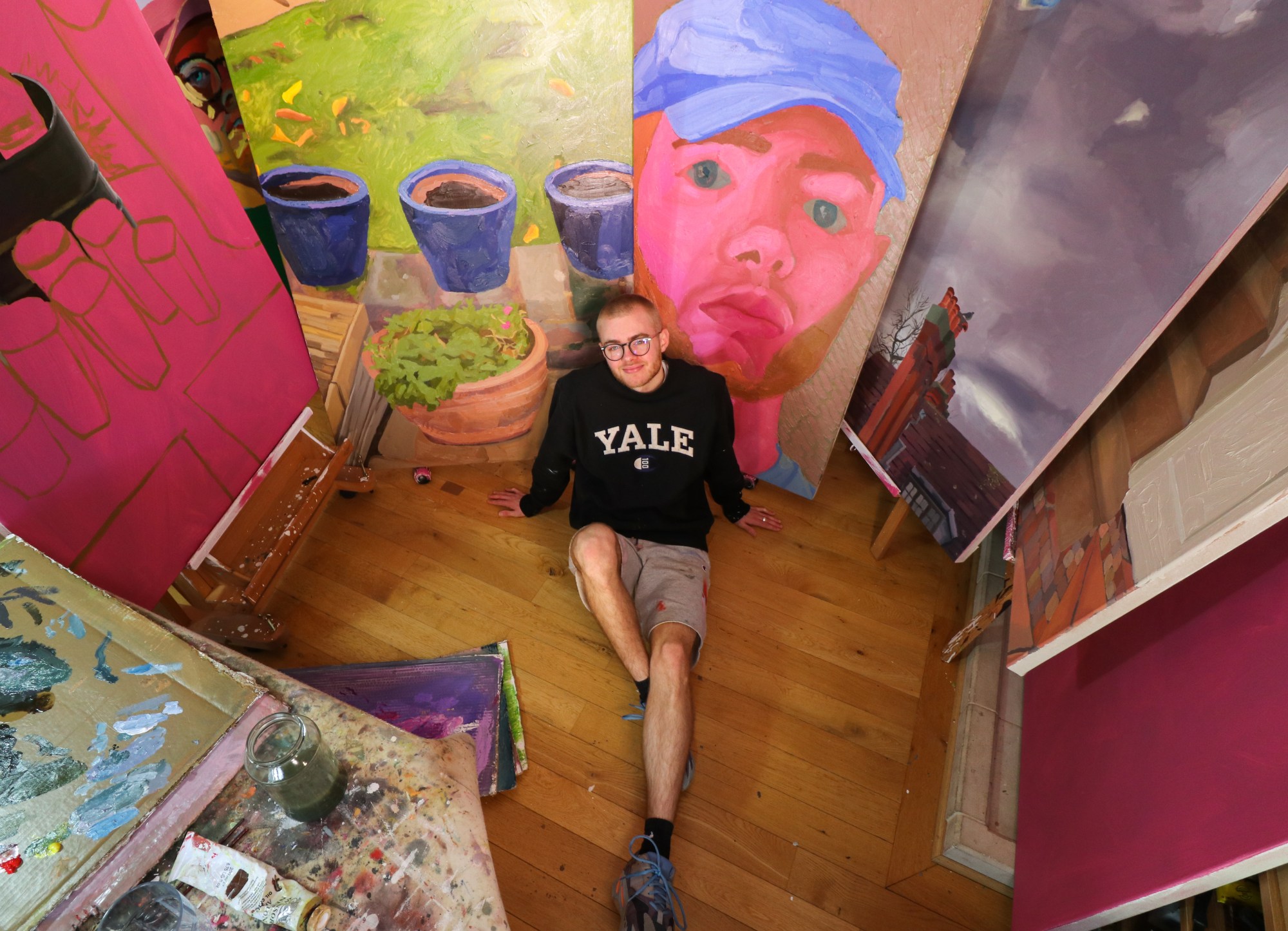
The nature of Alexandra Martens Serrano’s Masters program at The Dutch Art Institute’s Roaming Academy in Amsterdam — which is structured as a nomadic institution meeting only for a week each month, with stringent testing and precautionary measures in place — has allowed students to still feel a part of the school’s community through a unique remote learning program. A first year graduate student and multimedia artist, Alexandra says her program has allowed her to feel more creative despite all that’s going on in the world.
Traditional art school, “feels like you’re running all the time,” she says. “[Now] we’re given more time to think about what we’re consuming… what we are inspired by.” All this introspection has allowed Alexandra to examine the way art is consumed, and how we can “better the experience of the viewer” in the future. She’s pivoted to studying digital media, as art is increasingly exhibited online, and thinks this version of the virtual gallery show might even stick around post-Covid. “People are growing to be more conscious and appreciative of their consumption of art online,” she says, stressing the potential of communicating creative ideas digitally.
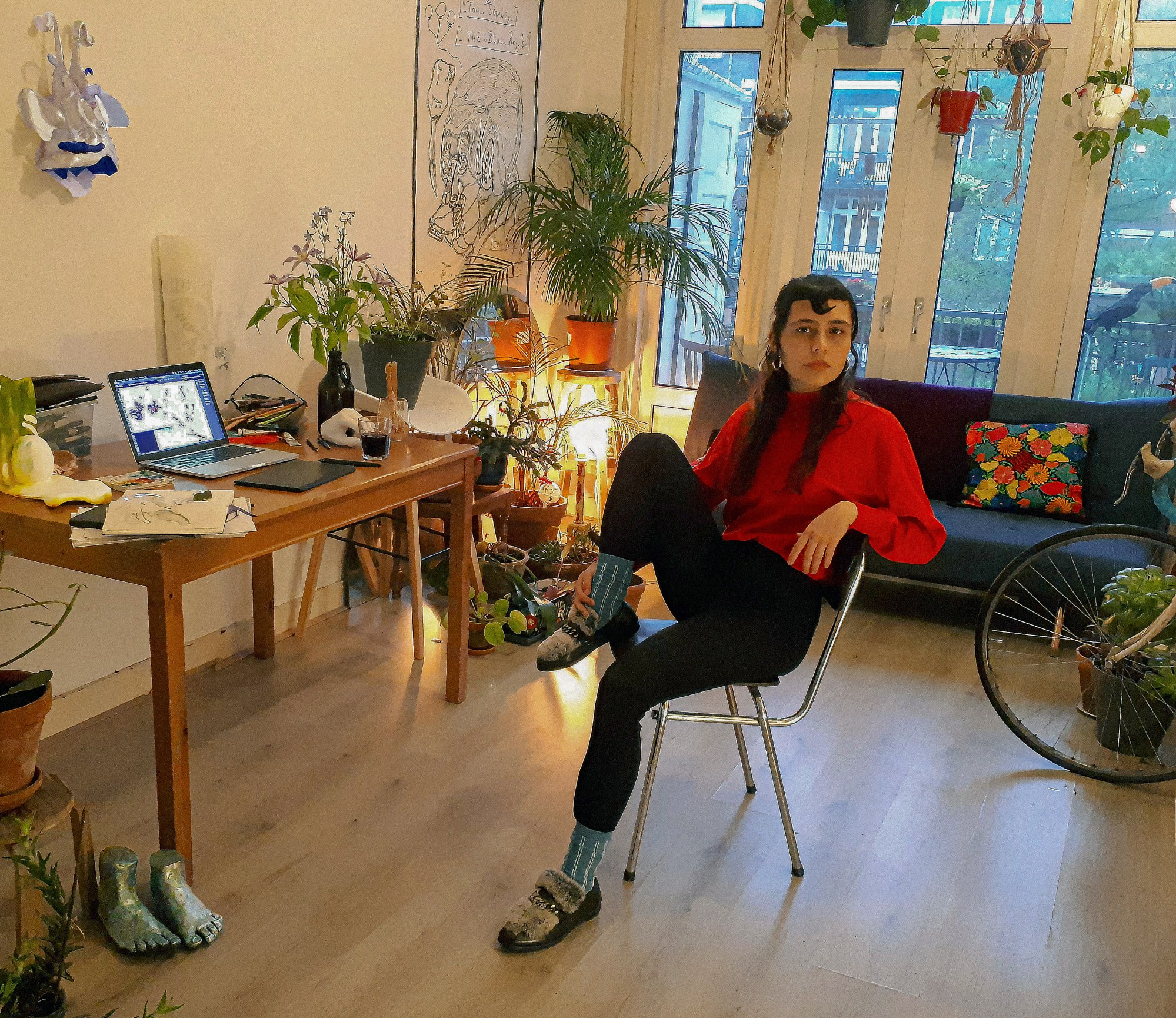
Elena Dorn, a student at the Universität der Künste Berlin, and Shania Nurein, who attends Central Saint Martins in London, both began exploring new mediums due to the limits of the pandemic. “I know I can’t sit in a studio space for long to finish a painting,” Shania says, “so I’ve started pumping out more experimental work… working with collage as a way of quickly painting and generally just exploring new, non-messy methods to create.” Out of the studio and working out of her apartment, Elena went from woodworking to drawing because she was afraid of waking up her neighbors. Seeking refuge in nostalgia, she started an exciting new project reimagining old photographs of her grandparents as small drawings. “Being trapped in this life of routines, I’ve been trying to focus more on conveying feelings of proximity and familiarity,” she says of her creative shift.
At a time when the future feels uncertain, Rosa Chang, who studies computing and the arts at Yale University, decided to travel halfway across the globe to enroll in a visiting students art program at Hongik University in South Korea. She saw an opportunity to further her studies while much of the world was on pause and wanted to get in touch with her Korean roots. “There was always a part of me wishing that I had gone to a technical arts school… [so] this past semester was basically me trying to squeeze in everything I could never take on at my home university,” Rosa says.
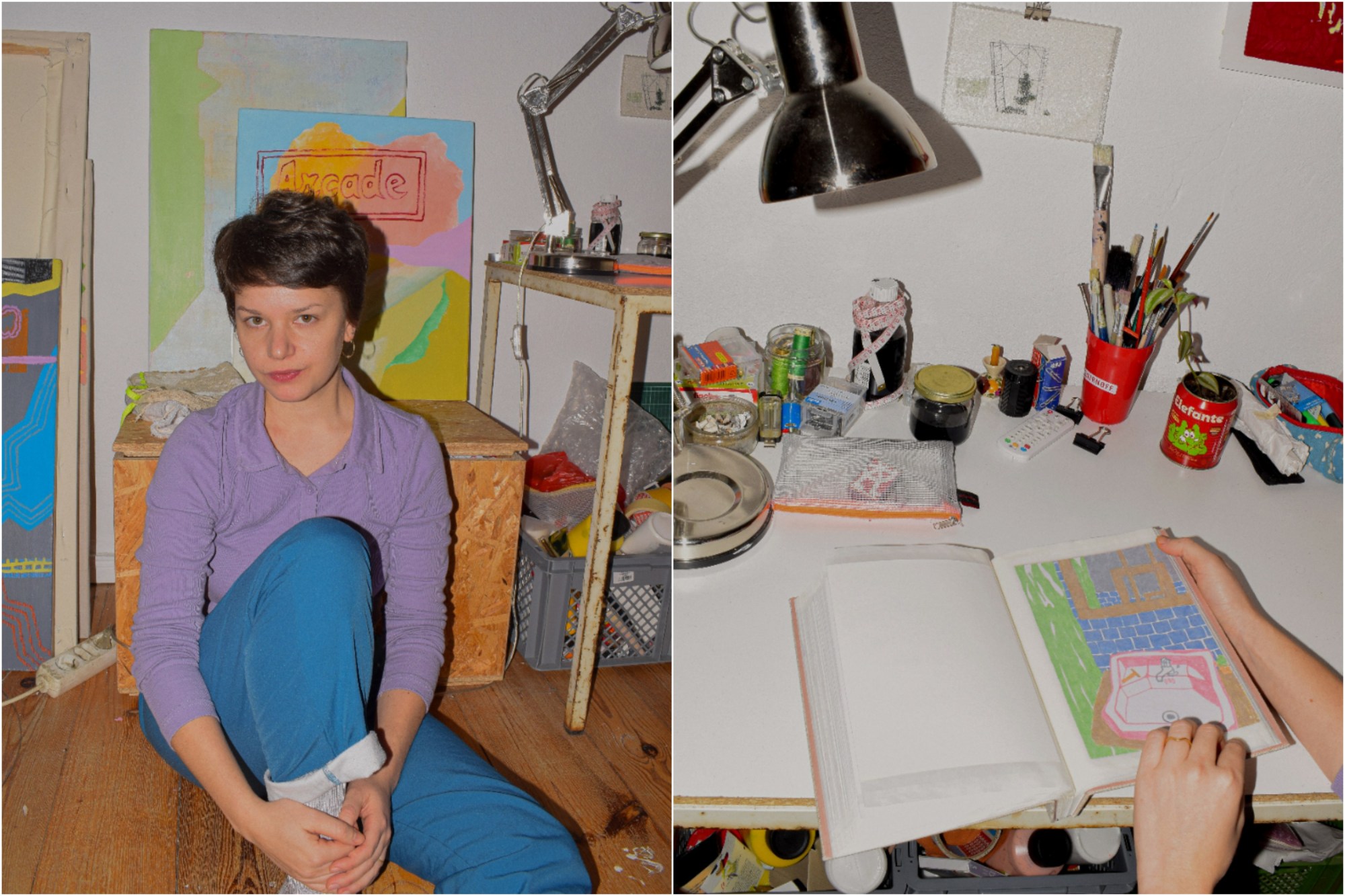
There have been challenges — Rosa’s second-grade literacy in Korean made socializing difficult — but she’s used her discomfort to push her art, too, outside of her comfort zone. “I always stuck to oil paint or charcoal because that’s what I started my art education with and they let me feel completely in control,” she says. “It’s been seven months since I’ve last touched any of those mediums.” Having spent most of her time in Korea working in fashion, glasswork and metal crafts, Rosa describes an unexpected feeling of exhilaration when dabbling in an unfamiliar medium: “I began to trust the uneasy feeling before the start of a project.”
Despite the limits of the pandemic on academics, many students are embracing all the discomfort that the pandemic’s brought them and newfound freedoms they’ve discovered through remote learning. “When reality doesn’t seem to exist and it seems ridiculous to gather the motivation for any legitimate progress,” Rosa says, “we have this sudden freedom from any preconceived consequences.”
Everyone speaks of coming to terms with the ‘new normal’, but with the unpredictable and ever-changing nature of the pandemic, the ‘new normal’ has become less of a transition into a new reality, and more of a constant and active effort to adapt. With the start of the new semester, a sense of optimism and a willingness to experiment and take risks may be what we all need during a time as challenging as this.

